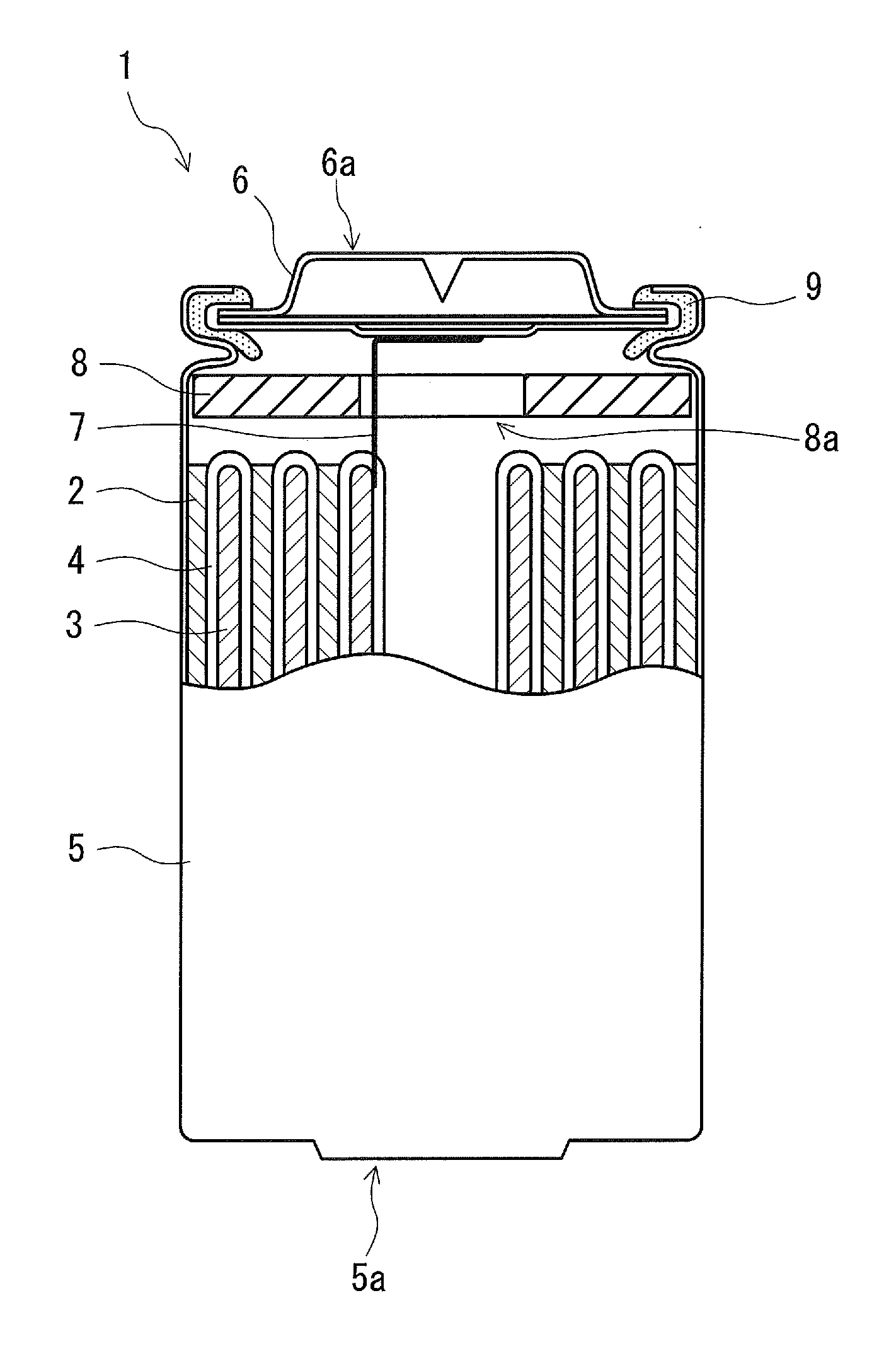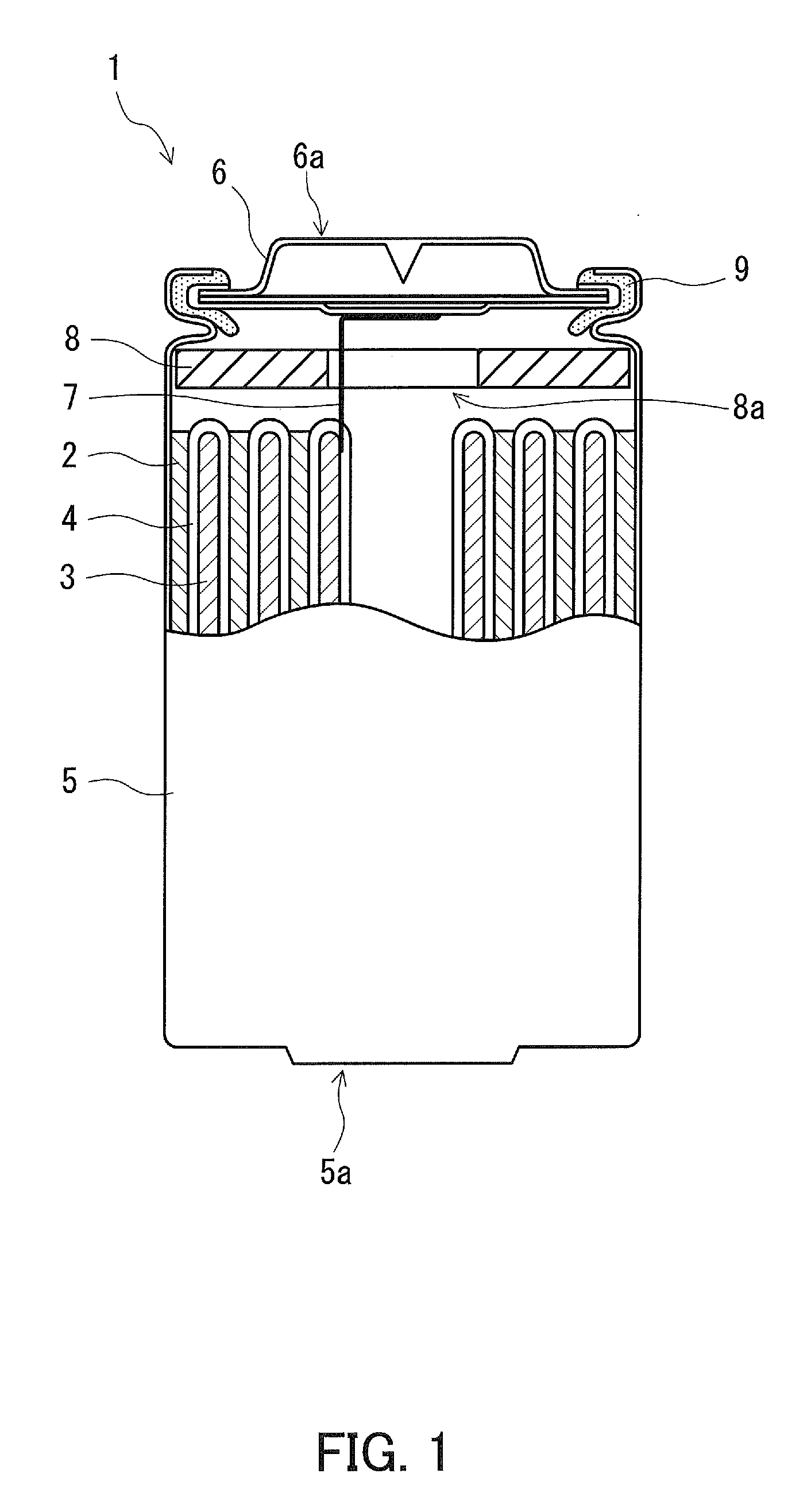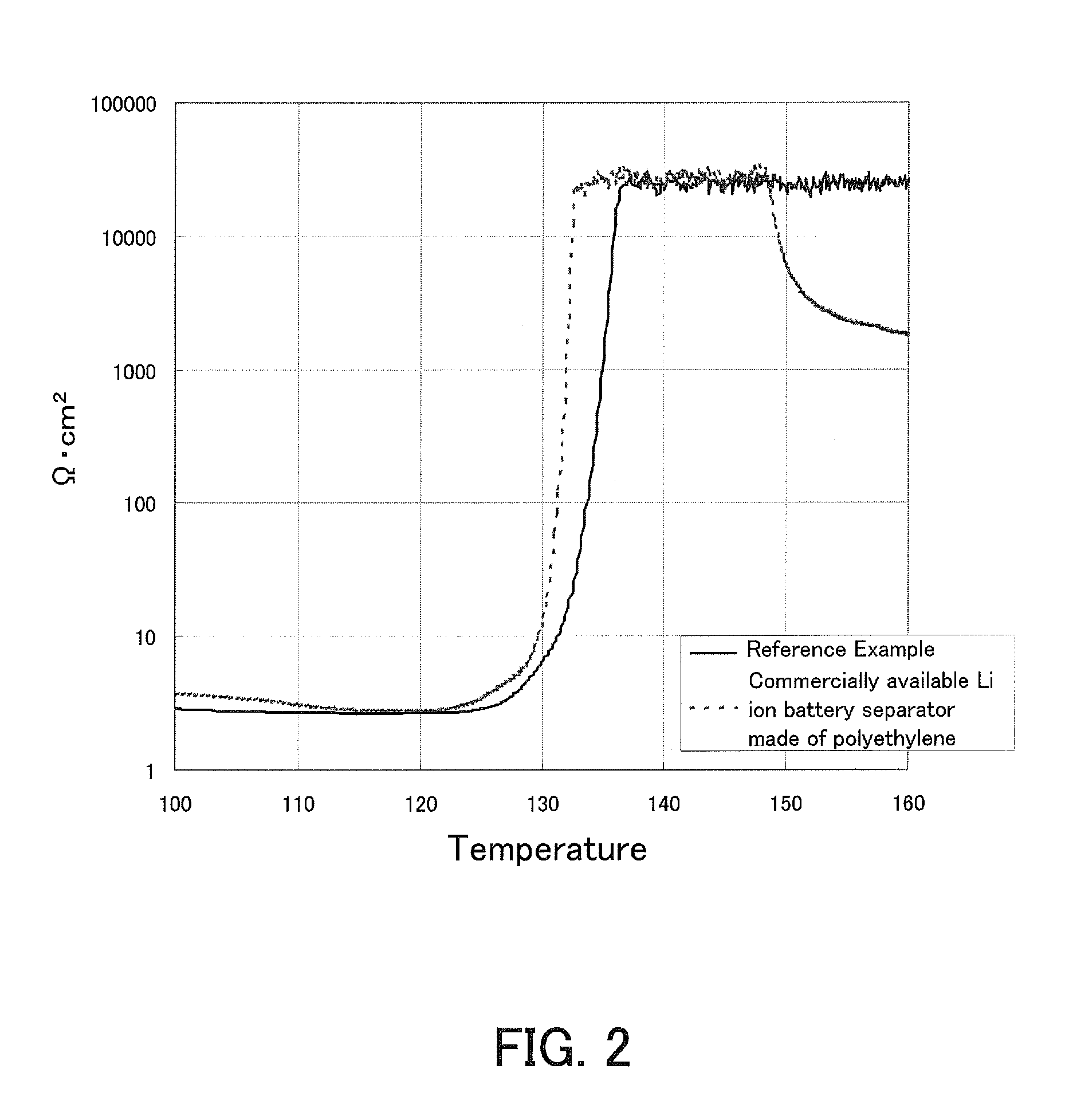Method for production of porous film, porous film, separator for non-aqueous electrolyte battery, and non-aqueous electrolyte battery using the separator
a technology of porous film and separator, which is applied in the direction of cell components, electric/magnetic/electromagnetic heating, cell component details, etc., can solve the problems of insufficient shutdown function, insufficient degree of crosslinking, and safety problems of conventional polyolefin microporous film, etc., to achieve excellent shutdown function, excellent permeability, excellent mechanical strength
- Summary
- Abstract
- Description
- Claims
- Application Information
AI Technical Summary
Benefits of technology
Problems solved by technology
Method used
Image
Examples
example 1
[0071]17 parts by weight of a resin composition composed of 3 wt % of an EPDM resin (Esprene 5527F, produced by Sumitomo Chemical Co., Ltd.), 32 wt % of maleic anhydride-modified PE with a weight average molecular weight of 250,000 (ADTEX ER403A produced by Japan Polyethylene Corp.), and 65 wt % of ultra high molecular weight polyethylene with a weight average molecular weight of 1 million (melting point 137° C.) were mixed uniformly with 83 parts by weight of liquid paraffin into a slurry state, melt-kneaded by a twin-screw extruder at a temperature of 160° C., and then extrusion-molded into a 4 mm-thick sheet. The molded product was taken out under a constant tension, cold-molded once by a roller that had been cooled in 10° C. cooling water, and then pressed by a belt press machine set at a temperature of 120° C. to produce a 1 mm-thick resin sheet. Thereafter, the resin sheet was stretched biaxially, 4.0 times in the machine direction and 4.0 times in the traverse direction at th...
example 2
[0072]The porous film was produced by the same method as that of the Example 1, except for that 3 wt % of a polynorbornene resin (Norsorex NB produced by Zeon Corp.) was used instead of the 3 wt % of EPDM resin.
example 3
[0073]The porous film was produced by the same method as that of the Example 1, except for that 3 wt % of the polynorbornene resin (Norsorex NB produced by Zeon Corp.) was used instead of the 3 wt % of EPDM resin, 16 wt % of an olefin thermoplastic elastomer (TPE821 produced by Sumitomo Chemical Co., Ltd.) was used instead of the 32 wt % of maleic anhydride-modified PE with a weight average molecular weight of 250,000, and the content of the ultra high molecular weight polyethylene with a weight average molecular weight of 1 million was changed from 65 wt % to 81 wt %.
PUM
| Property | Measurement | Unit |
|---|---|---|
| wavelength | aaaaa | aaaaa |
| oscillation wavelength | aaaaa | aaaaa |
| thickness | aaaaa | aaaaa |
Abstract
Description
Claims
Application Information
 Login to View More
Login to View More - R&D
- Intellectual Property
- Life Sciences
- Materials
- Tech Scout
- Unparalleled Data Quality
- Higher Quality Content
- 60% Fewer Hallucinations
Browse by: Latest US Patents, China's latest patents, Technical Efficacy Thesaurus, Application Domain, Technology Topic, Popular Technical Reports.
© 2025 PatSnap. All rights reserved.Legal|Privacy policy|Modern Slavery Act Transparency Statement|Sitemap|About US| Contact US: help@patsnap.com



